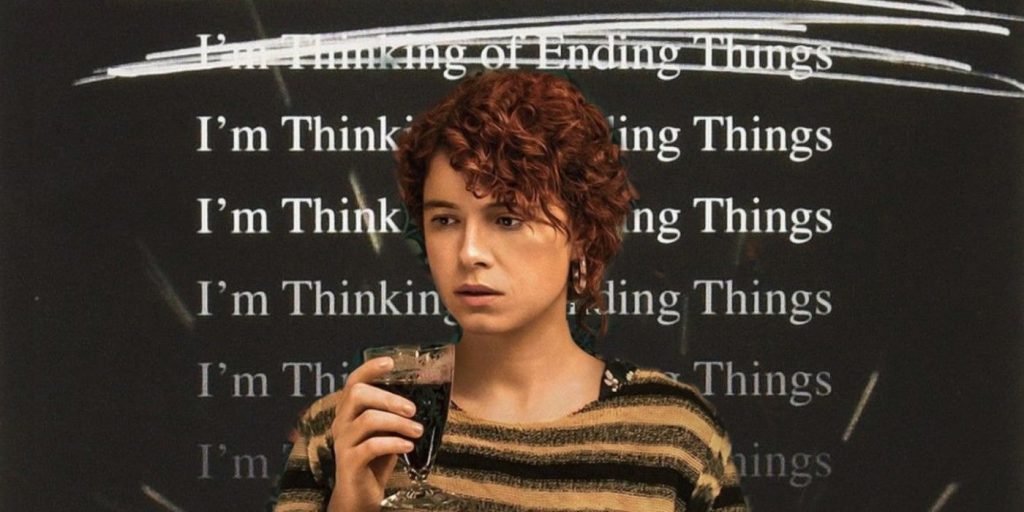A September Film Marathon

It’s great that both Cineworld and Broadway cinemas are back this month. I’ve already seen Tenet (disappointing) and Les Misérables (strong, salutary viewing) in socially distanced, near empty cinemas. But most of my viewing has been on a 40″ screen at home. We finished various TV series that have kept us going during lockdown (I’ve had to ration my viewing of Bojack Horseman, having done the first three series in six weeks). Therefore we’ve been watching more and more movies, new(ish) and old.
That’s why, in addition to my regular ‘holiday’ reading blogs, I thought I’d write about the movies, good and bad, that we’ve watched. For eight years, I’ve kept a record of what I’ve seen and read, which is particularly useful when trying to recall if we’ve seen a movie or not. The list doesn’t include any that we gave up on after a few minutes. (With books, I have a fifty page rule. If I’m not enjoying it after 50 pages, I give up. Often, of course, I stop earlier. The new Graham Swift got twelve pages, the Charlie Kaufman less than twenty. With films, I have lower standards, but we usually give up after a few minutes when we can tell we aren’t into it). My partner just gave up one of the Booker shortlisted books (and yes, I know, my call about Hilary Mantel having it sewn up turned out to be totally wrong). What’s interesting, looking at my reading diary, is that the number of books I’ve read has stayed stable, averaging sixty books a year, with a slight rise in summer. But the number of movies I’ve seen is at an all time (or, at least, eight year) high. I saw twenty movies last month, along with one livestreamed play, the Old Vic’s superb version of Faith Healer by Brian Friel, with Michael Sheen, Indira Verma and David Threlfall.
Two of the movies I watched were part of the same franchise. The new Bill and Ted movie is a nostalgic, sweet story that pretty much follows the template of the first one, which I rewatched, because it was on Channel 5 and I’d only seen the pan and scan 4:3 version on TV before (I did see the second one in a cinema). I went with an old friend when we both needed a bit of cheering up and it did the job. Music can, indeed, save the world.
I’ve seen Woody Allen’s Stardust Memories twice before, but both times were in the 80s and I’ve seen Fellini’s 8 1/2 twice since, so the elements of homage/parody were much clearer this time round. I liked it less as a result and was frequently – let’s not say bored, but enervated. Also, the running joke about everyone preferring his ‘early, funny ones’ is undermined when you know that after a few increasingly weak, ‘serious’ movies, Allen returned to making the late, funny ones, with mixed results. But, hey, the cinematography, by Gordon Willis, is fantastic. It still appears in lists of Allen’s best ten movies, but it shouldn’t. For my money, off the top of my head, the best ten, in no particular order, are: Annie Hall, Manhattan, Sleeper, Love and Death, Crimes and Misdemeanours, Hannah and her Sisters, Bullets Over Broadway, Radio Days and either Bananas or Everything You Always Wanted to Know About Sex* (*But Were Afraid to Ask). Yes, I still love the early, funny ones, though it’s a long time since I’ve watched one. This month, maybe.
Two not to bother with. My earliest adult fiction reading was the Sherlock Holmes stories and novels, so we were always going to check out Enola Holmes, which looked promising, but left me cold. I saw it six days ago but have already forgotten nearly everything about it. On the other hand, I could give you a detailed account of the nearly noir plot of the 1954 Black Widow (which shares a title with a great Debra Winger/Theresa Russell movie we’ve seen many times, but nothing else). A technicolour noir that fails on just about every level, it still kept us watching for ninety minutes because we needed to know how it turned out. Spoiler alert. It turned out that Ginger Rogers (in a role turned down by Joan Crawford) dunnit. Also, weirdly, there wasn’t a single widow in the movie…
Our Friday night viewing a week ago, The Heat, was far more successful. Melissa McCarthy and Sandra Bullock comedy play unlikely cop partners, forced to work together on a case. Silly, fast-moving, well structured and very, very funny.
That was on Film Four. My other go to channel for movies is the wonderful Talking Pictures TV run by a father and daughter from a house and shed in Hertfordshire. It shows cheap to obtain movies mainly from the 50s to 70s. And yes, many are as bad as Black Widow or worse, but there are plenty of out of copyright classics and lots of obscure movies that I haven’t seen for decades, have never heard of or was vaguely aware of as being at the cinema when I was a teenager. This month, we really enjoyed Lee Remick and Lawrence Harvey in Carol Reed’s 1963 The Running Man, a man fakes his death for the insurance story in which Alan Bates plays an insurance investigator who falls for Lee Remick. And I was pleased to discover that Frances (later Ford) Coppola’s first movie, for Roger Corman, was a surprisingly effective, if predictable, arty noir horror called Dementia 13. I also made a little video of eight seconds from the movie, because I immediately spotted that Tom Petty must have seen it and adapted the line for the opening words of the Heartbreakers’ classic first single, American Girl. Have a look.
Of course, after tweeting a video taken from my iPad, a I did a little googling and I was far from the first person to spot it, though Petty doesn’t appear to have confirmed it anywhere.
I’ve already mentioned Les Misérables, which is currently playing at Broadway and is well worth two hours of your time. Not so keen on Summerland, a well reviewed second world war story starring that I found contrived, dull and sentimental. A Sunday night BBC sort of film. Truffaut’s Day for Night, which I first saw at Broadway in the late 70s, stood up remarkably well to a third viewing, a homage to cinema that was in stark contrast to Stardust Memories, full of wit, humour and a light touch. It features Graham Greene in a brief cameo, as an insurance man. I was interested to discover, after viewing it, that Truffaut did not realise who Greene was until after the scene was done and the author had left. He was a fan, and would have liked to have been introduced.
Parkland, which I recorded ages ago, was a very effective drama about the day John Kennedy was shot, told from the point of view of people working in the hospital and for the police. Gripping, always interesting, felt true. Ava (the new thriller with Jessica Chastain, not the new art movie of the same name) was forgettable dross, not quite bad enough to give up on, not good enough to write any more about.
Stanley Donan’s 1963 Charade, on the other hand, starring Cary Grant and Audrey Hepburn, was enormous fun, clearly influenced by Hitchcock (whose Strangers on a Train we rewatched in August, in a slightly extended cut, what a fine movie that is) but with elements of screwball comedy too. A treat. Less successful, but still kind of interesting, was the explicit 1975 Richard Dreyfus film, Inserts, about a silent film director who turns to porn, one of two movies I watched this month that appeared to be based on one set stage plays but wasn’t. The other was Interview with Siena Miller and Steve Buscemi, a two hander from 2007 which didn’t come off and got worse as it went on. Why did I keep watching both to the end? With movies, unlike novels, I suppose I’m often curious to work out why things don’t work and you can only do that if you see it all. Also, I liked aspects of the performances, even if I didn’t like the script or direction. But mainly, I suppose, because of my OCD (or anal, whatever) completist side.
This post is getting long, so only a brief mention for 1951’s Hollywood Story, a rather clunky, noirish mystery that was clearly inspired by Wilder’s Sunset Boulevard and based on the murder of William Desmond Taylor (yes, another film about a 20s silent film director) which it followed closely until the end. If you’re interested in this kind of tale, you’d be far better off reading Brubaker and Philips’ fine graphic novel, The Fade Out which does it a lot better.
That leaves Melville’s classic crime drama Le Cercle Rouge, which can be found on BFI Player. Long but very satisfying, with Alain Delon and Yves Montand, amongst others. A classic heist movie that takes a long time to get to the heist, but you won’t mind the wait. From 1970 but felt older. And, finally, when in need of a classic comedy, we’ve found ourselves watching Fawlty Towers for the umpteenth time (and have just started watching a newer BBC offering, Ghosts, which is silly and great fun). But if you need a movie in this vein, you can’t go wrong with an Ealing comedy, and this month we rewatched The Lavender Hill Mob. Also, I think, from Talking Pictures TV. If you haven’t seen it (it’s the one with the Eiffel Towers), track down a copy immediately.
The best film we saw this month was also the bleakest. I didn’t like Charlie Kaufman’s novel, Antkind, but his movie, I’m Thinking of Ending Things on Netflix, is terrific. It’s a hard watch, at times, and I probably need to see it again, though we pretty much pieced together how it worked during a long discussion after it was over. If I get the chance to see it in a cinema, I’ll go. Had several intense discussions about this one with friends who’ve also seen it. The link above, by the way, gives a reasonable summary of the movie and how it relates to the novel it’s based on, but shouldn’t be read before you’ve seen it. Definitely our new movie of the month, but make sure you watch it when you’re wide awake and are up for a story that deals with depression and dementia.
What film to watch tonight? Recommendations welcomed – although, now term’s started again, I don’t think I’ll be doing twenty this month.
